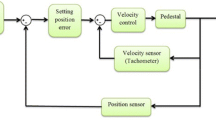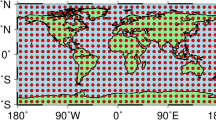Abstract
Doppler frequency shift which is defined as “the observed changes in frequency of transmitted waves when relative motion exists between the source of waves and an observer”, has wide applications in science, technology and different industries including communications, medicine, aerospace, electronics and etc. One of its common applications in aerospace is its use in tracking satellites and orbit determination. In low earth orbiting satellites, because of their low altitude to earth and their high rotation period around it, Doppler shift is appropriate to be used for tracking. In this paper, satellite distance and its derivative in time which is parameter in obtaining Doppler shift is derived. Position of the satellite is firstly derived using equations governing on them and TLE which contains orbital elements and essential information in different coordinate systems such as ECI, ECEF and topocentric. Then satellite distance to ground station and its changes in time is calculated via transformations of coordinate systems to each other. Having the distance, its derivative and beacon signal frequency, Doppler curve can be estimated in each pass of the satellite. Doppler shift can be used in an appropriate and precise satellite tracking technique.















Similar content being viewed by others
References
Newman, P. G., & Rozycki, G. S. (1998). The history of ultrasound. Surgical Clinics of North America, 78(2), 179–195.
Schleher, D. C. (2010). MTI and pulsed Doppler radar with MATLAB. Norwood: Artech House.
Morris, A. S. (2001). Measurement and instrumentation principles. Bristol: IOP Publishing.
Bate, R. R., Mueller, D. D., & White, J. E. (1971). Fundamentals of astrodynamics. Chelmsford: Courier Corporation.
Sturza, M.A. (1996). LEOs-the communications satellites of the 21/sup st/century. In Northcon/96. IEEE.
Montenbruck, O., & Gill, E. (2012). Satellite orbits: Models, methods and applications. Berlin: Springer.
Ali, I., et al. (2006). Doppler applications in LEO satellite communication systems (Vol. 656). Berlin: Springer.
Sherman, S. M., & Barton, D. K. (2011). Monopulse principles and techniques. Norwood: Artech House.
Cho, C.-H., et al. (2003). Antenna control system using step tracking algorithm with H∞ controller. International Journal of Control, Automation and Systems, 1(1), 83–92.
Rouzegar, H., Nasirian, M., & Ghanbarisabagh, M. (2017). Novel algorithm for tracking LEO satellites using doppler frequency shift technique. Wireless Personal Communications, 96(2), 2161–2178.
Ali, S. Z. (2013). Simulations of a satellite system for co-location in space. Göteborg: Department of Earth and Space Sciences-Chalmers University of Technology.
Klinkert, I. (2011). Satellite orbit determination with the global educational network for satellite operations (GENSO). Heerlen: Open Universiteit Nederland.
Daum, P. (2005). A satellite footprint visualisation tool. Lancaster: Lancaster University.
Chobotov, V. A. (2002). Orbital mechanics. Reston: Aiaa.
Author information
Authors and Affiliations
Corresponding author
Additional information
Publisher's Note
Springer Nature remains neutral with regard to jurisdictional claims in published maps and institutional affiliations.
Rights and permissions
About this article
Cite this article
Rouzegar, H., Ghanbarisabagh, M. Estimation of Doppler Curve for LEO Satellites. Wireless Pers Commun 108, 2195–2212 (2019). https://doi.org/10.1007/s11277-019-06517-5
Published:
Issue Date:
DOI: https://doi.org/10.1007/s11277-019-06517-5




